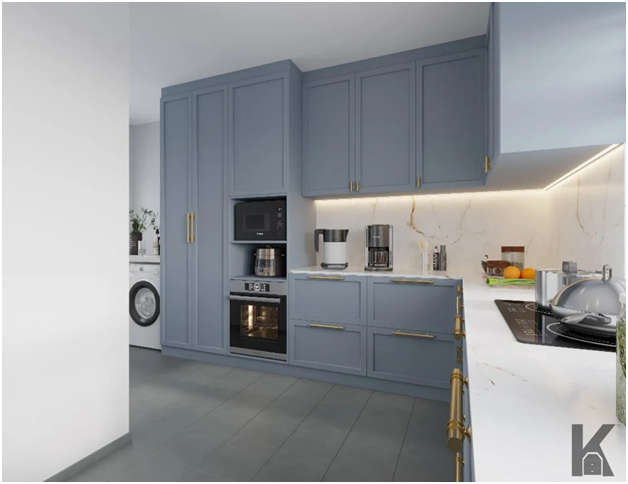
You can make your kitchen more organized by creating a functional wet and dry kitchen layout. This kitchen design allows you to divide your kitchen into two. You will use one side for heavy-duty cooking and the other for light preparations. However, the wet and dry kitchen design takes up space, so you make every inch count by being functional.
We will discuss the difference between a wet and dry kitchen and how to create a functional one, but if you want to go for the dry and wet kitchen design, browse through these wet and dry kitchen inspirations.
What is a Wet Kitchen?
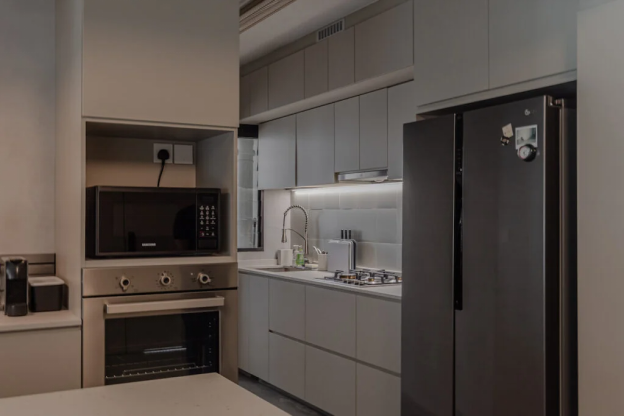
The wet kitchen is where the main food preparation and cooking occurs. It’s for heavy or greasy cooking. This kitchen typically has a tiled wall and floor, large windows, a stove, a deep sink, and a durable countertop.
Material choice for your wet kitchen must prioritize functionality over aesthetics. For instance, there’s the need for tiled walls and floors that are easy to clean and a deep sink for washing food items.
What is a Dry kitchen?
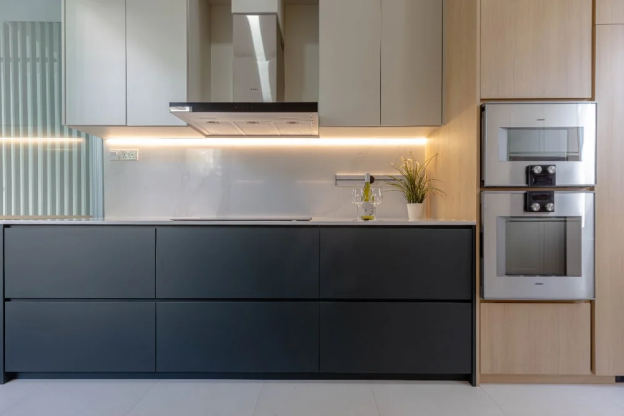
The wet kitchen is usually a smaller space for light preparations, like making snacks or quick breakfast and cutting vegetables. It usually houses smaller appliances like toasters and microwave ovens and may have a small sink for washing hands.
There may also be stools or chairs where the family can sit and converse while preparing breakfast or eating snacks. Decorative flooring and lighter counters are acceptable here.
The difference between a dry kitchen and a wet kitchen is their functions. The wet kitchen is a larger workspace for heavy cooking and preparation, while the dry kitchen is a smaller space for lighter preparation and cooking.
The Best Functional Wet and Dry Kitchen Ideas
The primary purpose of creating a functional wet and dry kitchen design is to enhance functionality and productivity. Below are some wet and dry kitchen ideas to help you create a functional kitchen:
1. Split the Kitchen into Two Sections
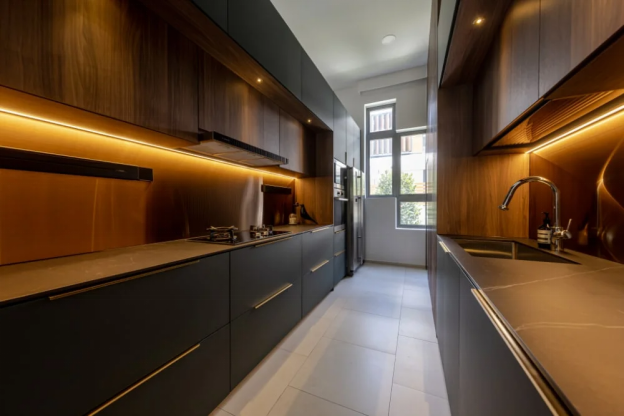
There should be a divide between your wet kitchen and dry kitchen. You can use a galley kitchen design if you have ample space. But if you have limited space, you may use a glass partition or plywood to separate both sections. The dry kitchen is usually smaller, and the wet kitchen is more extensive. Your wet kitchen should be confined so it’s not visible from the living room because of how messy it can be.
2. Focus on Functionality
Functionality is essential when creating your kitchen, so you must ensure your dry and wet kitchen layout plan prioritises functionality. The wet kitchen can also house the dishwasher, utensils, dishes, and cutlery. You can also build a pantry to store groceries and other kitchen items. A floor-to-ceiling pantry is a great idea.
On the other hand, the dry kitchen can also function as a bar and breakfast table for breakfast, snacks, and drinks. You should store appliances like ovens, microwaves, blenders, espresso machines, and toasters in the dry kitchen. You will need these appliances when making quick meals, so keeping them here supports easy reach.
3. Provide Easy Movement Between Both Kitchens
You want to ensure that moving from one kitchen to another is seamless. Hence, both kitchens should be close to each other with less obstruction. This will help in moving shared appliances and food items when needed.
The best way to achieve this is by designing a galley kitchen. However, if you don’t have sufficient space and want a dry and wet kitchen HDB, ensure it’s well-structured to allow easy movement.
4. Ensure Proper Ventilation
Proper ventilation is most important in the wet kitchen, which is commonly confined. Heavy cooking involves frying and boiling, which causes heat and smoke that pollute the air. Thus, the room must be well-ventilated to let in fresh air and prevent stale and strong smells from stuffing the kitchen.
Ventilation becomes more crucial in wet and dry kitchen HDB because of the small space, so you must find ways to allow proper ventilation.
5. Consider the Ease of Cleaning and Maintenance
Generally, your HDB kitchen design should support easy cleanup. Many\ heavy activities occur in the wet kitchen, causing a mess that can be difficult to clean up. Its layout should allow for easy cleaning and maintenance. You can make your kitchen durable by fixing splash-back tiles that are easy to clean, opting for tiles instead of carpets and marble countertops.
There’s less bother in the dry kitchen, so you can be less picky and go for aesthetic materials. However, they must also be durable.
6. Consider Using Two Cooktops
A stovetop is necessary in the wet kitchen for heavy-duty cooking, but you can also consider adding another cooktop to make cooking easier.
You can install another in the dry area for light cooking and heating food. You can build the stove into the counter space, making it possible to heat food without entering the wet kitchen.
7. Build a Kitchen Island or Peninsula
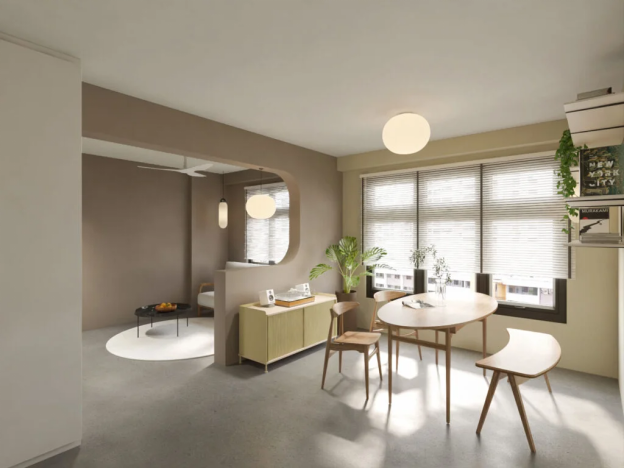
Installing a kitchen island or peninsula can make your kitchen more functional. The kitchen island can serve as the dry kitchen, with its top being the counter space. You can also fix a stovetop and sink into it. Also, the kitchen island can serve as a makeshift dining area when you fit in chairs. This layout works well with HDB wet and dry kitchen design.
On the other hand, you can also use the peninsula. While it can’t serve as a wet kitchen, it can divide both kitchens and act as a dining room.
Conclusion
Creating a functional wet and dry kitchen can help your cooking area look more organised and functional. The wet kitchen is for heavy-duty cooking, while the dry kitchen is for light preparation and cooking. There are several ways to create a functional kitchen space.
This includes splitting the kitchen into two, providing easy movement between both kitchens, ensuring proper ventilation, and prioritizing functionality over aesthetics. Wanting to check out more kitchen design ideas? Check out Kitchenate at https://www.kitchenate.sg/ today.

